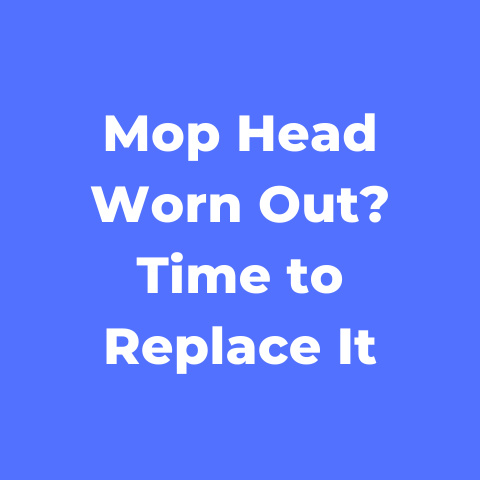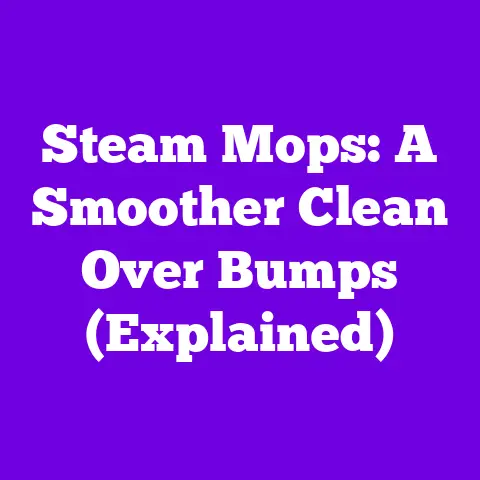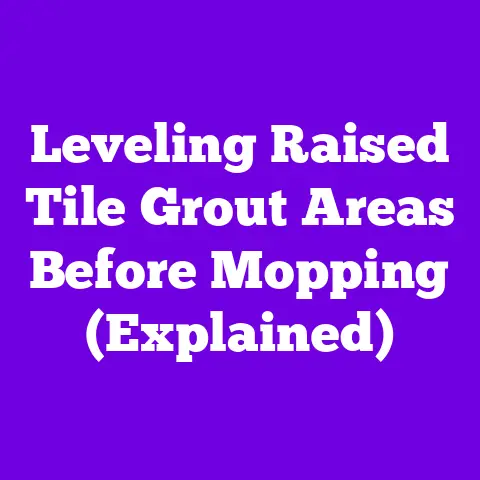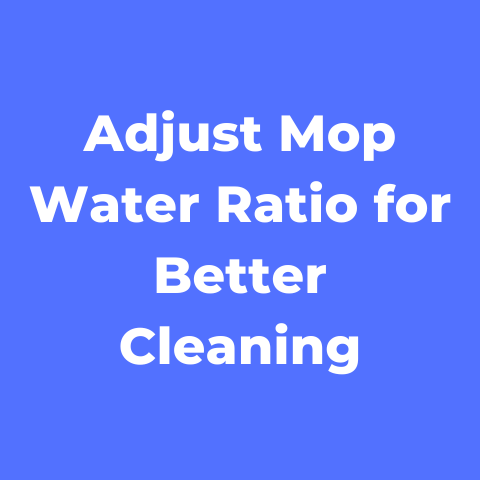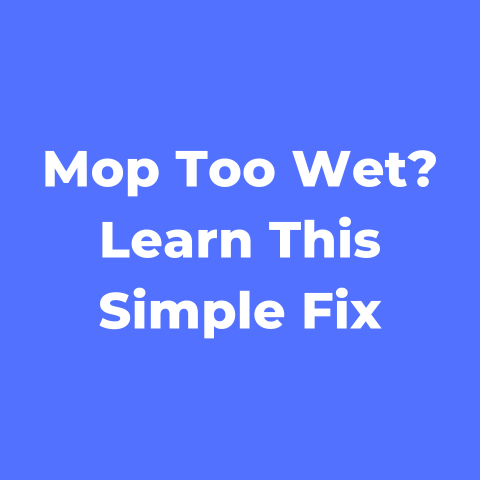Why Your Mop Fails to Grab Dirt and Grime
A mop that fails to effectively grab dirt, dust, and grime is one of the most frustrating cleaning issues you can encounter. But with some troubleshooting and adjustments, you can get your mop grabbing dirt again.
This comprehensive guide will walk you through the top reasons your mop doesn’t pick up debris, with actionable solutions to fix the problems. We’ll also provide preventative tips to keep your mop working its best.
By the end, your floors will shine and sparkle again thanks to a fully-optimized mop!
checking mop head
The most common reason a mop fails? An old, worn out mop head. Mop fibers wear down with repeated use, becoming less effective at absorbing liquid and grabbing particles.
Regularly check your mop head for signs of wear:
- Fraying fibers
- Flattened ends
- Matted, messy appearance
- Faded color
- Lingering odors
If you spot any of these, it’s time to replace the mop head. This is an easy fix that instantly restores mopping power.
how to replace mop head
Replacing your mop head is a quick process:
Step 1: Remove the existing mop head from the mop base. Depending on your mop style, this may require unclipping, unbuttoning, or unscrewing.
Step 2: Secure the new mop head. Align it properly on the base and fasten into place.
Step 3: Before first use, prepare the new mop head according to included instructions. This often involves washing for better absorbency.
Step 4: You’re ready to mop with renewed grime-grabbing vigor!
For best results, we recommend using O-Cedar and Libman brand mop heads with matching bases. Their innovative Duo-Fiber and PowerPad technologies trap dirt in unique ways.
With the ideal mop head securely in place, tackling stuck-on messes becomes much simpler. But issues can still arise…
chose unsuitable mop type
Not all mop types excel at dirt pick-up. Using an incompatible mop for your needs will hinder results.
Consider the surface material, types of spills, and desired cleaning level to select appropriate mop styles:
General purpose: Great for laminate and tile. Choose sponge, microfiber, or blended fiber heads. Libman Freedom Spray Mops effective with PowerPad technology.
Deep cleaning: Rid concrete floors of oil stains. Use industrial string or scrubber mops like Quickie Bulldozer or O-Cedar heavy-duty mops.
Slight liquid messes: Absorb small spills with cotton yarn or ultra-fine microfiber mops. O-Cedar EasyWring is quite absorbent.
Versatility: Blended synthetic mops transition from stone and wood, to vinyl and concrete floors. Shark Deluxe Pro combines microfiber and cotton for varied use.
With the right mop for each job, grabbing ground-in dirt becomes effortless. Next let’s discuss…
inadequatecleaning solution
The cleaning agent used is crucial for loosening debris so mops can remove it. Weak, incorrect formulas lead to subpar dirt and dust pick-up.
Use the following cleaning solution guide for maximum grime grabbing:
Daily tiles & laminate: Mix warm water and small amount of gentle, neutral pH soap like Murphy Oil Household Cleaner. Too much soap leaves slippery residue.
Grease on concrete/stone: Degreasers like Simple Green penetrate oil and lift it from pavement. Great for garages and commercial kitchens.
Disinfectant needs: Mix equal parts water and original pine-scented Pine-Sol. Proven to kill 99% of bacteria and viruses with its active cleaning agents.
Soap scum removal: Apply Scrubbing Bubbles Bathroom Grime Fighter foam directly to surfaces. Let set 5 minutes before scrubbing and mopping away build-up.
All-purpose option: For scrubbing and mopping all hard floors, Method All Purpose Natural Surface spray cuts through messes beautifully.
With the appropriate cleaner, mops effortlessly lift filth they struggled with using weaker solutions. Next we’ll troubleshoot…
mop too dry
When a mop head doesn’t retain adequate moisture, dust and dirt won’t adhere to the fibers. Floors appear unwiped in the mop’s wake.
To maximize moisture absorption and retention:
- Soak the mop head in lukewarm water mixed with cleaning formula before mopping. Let it fully saturate for 1-2 minutes.
- Wash mops in cold water always to prevent premature breakdown of materials
- Replace mop heads every 3-6 months, washing new heads before first use
- Consider steambased mops like Bissell PowerFresh for constant wetness
- Wring out mops thoroughly before use – excess water prevents absorption
With proper moisture achieved, debris will readily stick to mop heads rather than floor surfaces.
dirty discolored mop
As mops are used over time, the fibers collect residual dirt that can redistribute across your floors. Murky mop water also reduces cleaning power.
To prevent redepositing of soil, regularly clean mops:
Standard mop heads: Hand wash heads using warm, soapy water. Rinse until water runs clear. Allow to fully air dry in an open space before using again.
Machine washable options: Many microfiber mop heads safely wash in washing machines. Use gentle cycles and natural detergents to prolong life. Line dry if possible.
Sanitization: After washing, soak mop heads in a vinegar and water solution for 10-15 minutes. 1 cup vinegar per gallon of water removes bacteria for fresh, disinfected mops. Be sure to rinse any vinegar scent away before mopping floors.
Whitening: Bring water and lemon juice to a boil in a pot on the stove. Add mop heads and gently boil for 30 minutes, then let cool fully in the solution. This natural acid process restores dingy mop fibers to look like new!
With grime eliminated and mops refreshed, particle pick-up is greatly improved with each use. But what if issues persist? Let’s explore…
inadequate mop bucket
The design of your bucket can hinder mop functionality, preventing floors from getting truly clean. Be sure you have:
Appropriate size: Bucket should fit fully saturated mop head with room for debris-filled water to gather without spilling over.
Built-in wringer: The best mop buckets allow you to wring out excess liquid from mop heads with a quick lever press. No hand straining needed.
Wheels: Buckets that roll smoothly from room to room make the whole process much simpler. Just be sure wheels don’t leave scratches or residue.
Drainage spout: Look for a corner spout to easily empty dirty water without getting grime on your hands or floors.
We recommend O-Cedar Quick Wring Spin Mop Bucket, which has the above functional design features other buckets lack.
Mopping becomes almost effortless when you eliminate cumbersome equipment barriers. Up next – ensuring floors are properly prepped.
inadequate surface prep
Before mopping, floor surfaces must be prepared properly to allow for debris adhesion and simple scrubbing.
Start by clearing floors fully of objects, furniture, and rugs. Then thoroughly sweep, vacuum, or dust mop hard floors to lift dirt and debris up. This prevents spreading around larger particles during mopping.
Inspect for any sticky spots or spills – use rags and cleaning solution to spot treat these areas prior to mopping entire surface. This prevents grimy build up on your mop fibers later.
Check for glossy patches or leftover cleaning solution that may cause slipperiness when layered with new mop water. If floors are quite glossy or covered in residue, do a rinse mop first with plain water.
Proper prep saves time and energy while mopping, letting you focus on those stubborn spots rather than broadly entrenched dirt. Which leads us to preventing future issues…
prevention tips
While mops fail for all sorts of reasons, smart cleaning habits stop problems before they start:
Use floor mats at entrances, in kitchens, and by sinks to reduce tracked-in dirt that builds up requiring heavy mop scrubbing.
Clean spills quickly to prevent staining, sticky residue, and penetration deeper into floor materials. Address messes ASAP for easier mop removal later.
Sweep/vacuum routinely so particulate has less chance to grind into flooring, needing harsh chemicals and elbow grease to lift.
Shake out area rugs outdoors regularly to prevent deep piles of debris that inevitably get tracked through the house.
Use scratch free pads under furniture legs to avoid damaging floors that trap grime in scratches and grooves.
Ventilate kitchens and bathrooms with fans while cooking, showering, etc to reduce moisture build up that allows dirt adherence over time.
Clean mops routinely with methods mentioned previously so they don’t redistribute stuck-on bits back to floors.
By actively preventing dirt build up and floor damage that exacerbate mopping challenges, you create easier cleaning going forward.
when to replace mop
Over extended periods, even properly maintained mops wear down to the point of replacement being necessary.
Signs it’s time to retire a mop:
- Missing screws or broken mop head clips that prevent secure fastening
- Loose or wobbly handles impede scrubbing power
- Sticking wheel casters for poor mobility
- Warped or leaky buckets don’t contain water
- Multiple stuck fiber clusters or consistently bad odors
While a good mop can power through occasional issues outlined in this guide, equipment reaching this level of disrepair requires retirement.
Most quality mop systems provide 1-2 years of reliable use with proper maintenance. Prolong lifespan by:
- Allowing mop heads to fully air dry between uses
- Storing equipment in cool, dry spaces like utility closets
- Cleaning buckets with gentle soap and water only
With just small habits, favorite mop companions keep floors gorgeous for years before replacement becomes essential.
conclusion
While failed mop heads certainly make scrubbing floors frustrating, identifying the root causes is key to restoring grime and dust pick up power once more.
By following the troubleshooting tips in this guide, diagnosing and preventing a range of common mopping problems becomes simple.
Soon you’ll have sparkling clean floors again thanks to an optimized system! Let us know any other mop issues you come across by contacting our cleaning experts any time. Happy mopping!

